Dear members of the alpha year
life-long learners and thinkers
this letter marks the arch of the complexity module, and before anything else I wish to thank everybody for the investment of time and attention which made the module possible on zoom, and for the opportunity to ride this long, yet condensed, plunge in your company, in spite of embodiment obstacles ;-). During the sessions I especially appreciated your many and good questions which extended the discussion beyond the initial content, and made the contact and exchange at all alive at a distance. Thinking takes place in relation, even when we come ready to our argumentation, or presentation, and the invitation to participate in your class definitely pushed me and pulled me towards refreshed and renewed lines of understanding.
The module grew in multiple stages, so will try to reconnect them here, and then provide a feedback for your work on the maps.
Indeed, the world we inhabit is growing more complex, escalating how connected and interdependent we all are. Driven by the intensification of energy and resources use, by rapid demographics, collective coordination and by exponentially advancing technology. Yet, with it, our world is more complex predominantly because we are learning to see and recognize complexity, and we are beginning to recognize ourselves as part of wide, immensely complex and incredibly generative networks and processes of recirculation and recreation of energy and matter. This realization on one side forces us to mature. We are not the perfect cherry on top of the cake, nor are we the ruthless product of some competitive evolution rat-race. We are part in a becoming ‘between possible and impossible’, which presents a multiplicity of metastable paths and niche opportunities at all scales. We need a more nuanced understanding of the multiple systems of which we are part and of the way they regenerate and sustain the spaces we exist in. We need to reconsider our underlying metaphors and rules of how the world works in order to allow a shift in attitude and goals, to bring forth an appropriate participation in these systems as co-creative agents. And with it, while reframing our mindset we gain transformative and creative forces that increase degrees of freedom for action, a bridge through burgeoning diversity towards new phases of coordination and idea generation. Leverage points for introducing change. The pleasure to re-understand ourselves in a greater context, while embracing greater processes in the coagulation of thinking.
Complexity is not beyond our understanding, at least not always, and in this sense, it is neither about getting paralyzed or pessimistic, nor about naïve marvel, it rather can kindle in us different cognitive processes and coordination strategies, together with hands-on approaches.
Hands-on approaches are a good way to relate to complex systems, we saw it with the simulations you explored together – which study complexity by attempting to replicate the system behaviors. And we touched it, in an initial way, through the maps’ iteration.
Maps are one of the really smart tool we have to externalize our conceptualizations and they make us able to iterate these conceptualizations from multiple standpoints. In my experience, once they are out on the paper new information become visible and the map can become more complex in structure, grow in extent – both of space and in time -, and include multiple types of links among components. Moreover, it becomes a shared ground of discussion that aids communication on complex topics, and it’s simple to record modifications. It is an instrument for research and discussion which I hope you will continue to use.
Once more, keep in mind that each map express a particular ‘point of view’ (for how general it may be), which once you manage to recognize can be played with. To give an example you can map a school from the standpoint of social entities that are involved in the education systems, or from the standpoint of one child, or from the standpoint of the body of teachers – very different maps, and usually all are needed to really understand and reframe the issues at play.
The variety of topics and approaches in your maps was remarkable and attractive. Originally, we would have discussed them in class unfortunately with all the changes we did not get to it. So, I will try at least to ‘map’ here (order is not hierarchical) the different approaches (some overlapping more than one) that I could recognize in your works and which you may find useful as a prism in future projects:
- Systematic mapping of system – mapping all components at multiple levels, different stakeholders, possible behaviors, controlling factors, existing challenges
- Belgian Electricity System
- Triathlon
- Mapping the research into a dynamic situation/question – all factors influencing a dynamic situation, their connections and how they influence each other, over time – research mapping. It can eventually be edited and used for presentation.
- Single parent parental care (from collective data processing and iteration – so it is as well the mapping of an ongoing discussion/brain storming – a lot can be extracted from different points of view)
- Covid 19 (data aggregation from multiple sources/media)
- Maps of processes – how many different processes are necessary in order for a personal action to take place; where the action is seemingly local (eating a fruit) and the processes extend from local to global (selling point, transport, agriculture, markets, climate, soil…). This can be a good map to reveal social – technological – environmental complexity.
Learning Japanese – beginning with a clear systematic description, which extends (in trees) into underlying local processes and stakeholders involved (teachers, journeys, …) and then overlay on the whole map global processes (transport, internet, banking).- Kiwi for breakfast
- Reading a book on
- Book
- Maps of inputs/experience – the many inputs a system is able to process and integrate while performing a simple action (interface – cognitive complexity – subject-centered). Mapping inputs of course calls into the picture underlying processes.
- Walking in the park (extending into underlying processes)
- Glass of wine (extending also into underlying processes of production)
- Stakeholders maps – illustrating the multiple types and levels of stakeholders involved/engaged/having interests in a particular process/activity. Those are either influencing, or are influenced by, or both.
- School – detailing circles of stakeholders from closer community, to institutions and to global social systems
- Flowchart: mapping/visualizing a process or a workflow
- Translators provision for EU meetings in Brussels
- Mapping of existing options – usually mapped around a product/ service
- Coffee flavor
- Mapping of activities – all the necessary actions involved in the realization/success of a particular activity (planning/coordinating sequence of actions) – can be centralized plan map; or user-centered.
- Cultivating extraordinary intelligence (here it managed to overlay both the plan and the user-centered underlying processes of change)
- Reading a book (both from the standpoint of the reader and the author/book publishing – can be read also as what mediates the encounter reader-author)
- Walking in nature
- Bike in nature
- Bike-trip
- Decision-making tree – mapping the different factors which influence a process of decision-making and its consequences; achievement of a goal in possible scenarios. (See also here an interesting way to work with this future decisions kind of maps: search futures wheel by Jerome Glenn)
- Sailing boat
- Story Map: mindmap of main ideas, characters, points of interactions
- The mole
- Mindmap: mapping of main topics (ideas, peoples, options, activities, ..) connected to a central idea in one’s thinking.
- Vegan
Thank you all for the great work!


